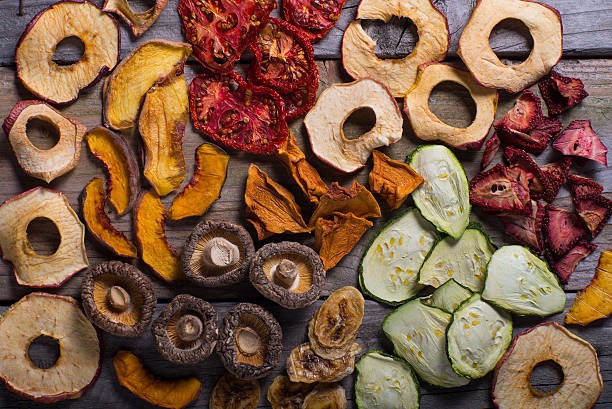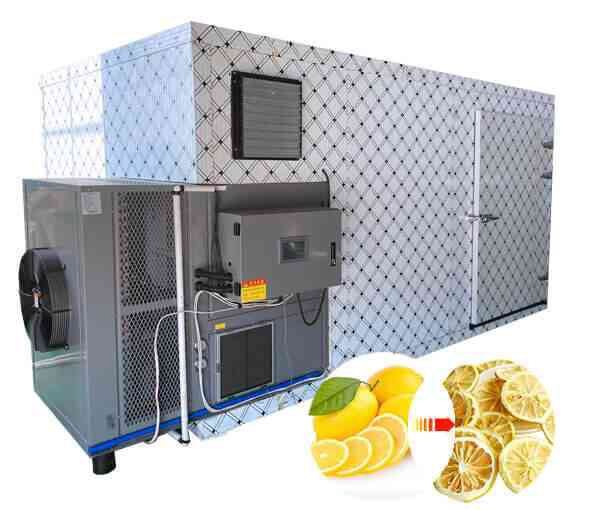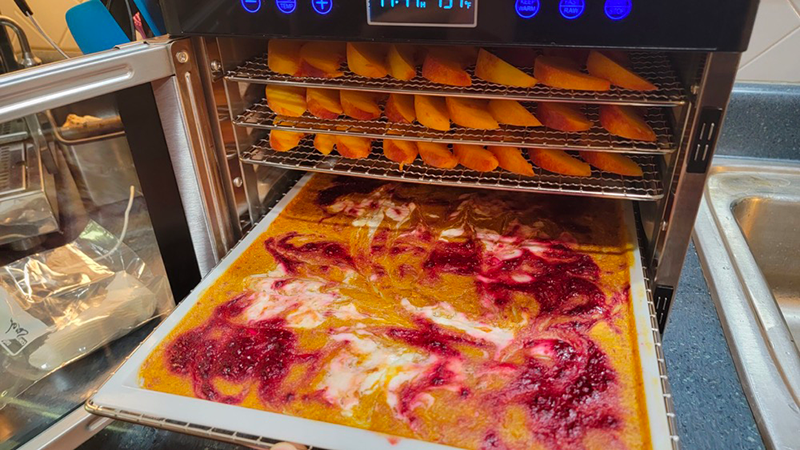
Content Menu
● What is Food Dehydration?
● How Does a Food Dehydrator Work?
● Factors Affecting Dehydration Time
● Typical Drying Times
● Steps to Dehydrate Food
● Common Mistakes in Dehydrating
● Benefits of Using a Food Dehydrator
● Tips for Successful Dehydration
● Understanding Drying Temperatures
● Conclusion
● FAQ
>> 1. How long does it take to dehydrate fruits?
>> 2. Can I dehydrate cooked foods?
>> 3. What temperature should I set my dehydrator?
>> 4. How do I know when my food is fully dehydrated?
>> 5. What's the best way to store dehydrated foods?
● Citations:
Food dehydrators are essential appliances for preserving food by removing moisture, which helps prevent spoilage and extends shelf life. Understanding the time it takes to dehydrate various foods is crucial for anyone looking to utilize this method of preservation effectively. This article will explore the dehydration process, factors affecting drying time, and provide insights into the best practices for using a food dehydrator.

What is Food Dehydration?
Food dehydration is the process of removing moisture from food to inhibit the growth of bacteria, yeasts, and molds that cause spoilage. This method has been used for centuries and is particularly popular among those who want to preserve seasonal fruits and vegetables or create lightweight snacks for outdoor activities.
How Does a Food Dehydrator Work?
A food dehydrator uses a combination of heat and air circulation to dry food evenly. Most dehydrators have adjustable temperature settings, allowing users to dehydrate various types of food at optimal temperatures. The basic components include:
- Heating Element: Provides consistent heat for drying.
- Fan: Circulates air to remove moisture.
- Trays: Hold the food items being dehydrated.
The dehydrator operates by drawing in air from the environment, heating it, and then circulating it over the food placed on its trays. This process effectively removes moisture without cooking the food, which helps retain its flavor and nutritional value.
Factors Affecting Dehydration Time
The time required for dehydration can vary significantly based on several factors:
- Type of Food: Different foods have varying moisture content. For instance, fruits typically take less time than vegetables or meats.
- Thickness of Slices: Thinner slices dehydrate faster than thicker ones. Cutting food into uniform pieces ensures even drying.
- Humidity Levels: High humidity can prolong drying times as it takes longer for moisture to escape.
- Temperature Settings: Higher temperatures can speed up the process but may also risk cooking the food rather than dehydrating it properly.
- Airflow: Proper airflow is crucial for effective dehydration. Overcrowding trays can hinder airflow and lead to uneven drying.
Typical Drying Times
Dehydrating food can take anywhere from 2.5 hours to over 16 hours depending on the factors mentioned above. Here's a general guideline for common foods:
| Food Type | Drying Time (Hours) |
| Fruits (e.g., apples) | 6 - 12 |
| Vegetables (e.g., carrots) | 4 - 12 |
| Herbs | 1 - 4 |
| Meats (e.g., jerky) | 6 - 10 |
It's important to check periodically during the drying process to ensure that food is not under or over-dried.
Steps to Dehydrate Food
1. Preparation: Wash and cut your food into uniform pieces. For some vegetables, blanching may be necessary before dehydration.
2. Loading the Dehydrator: Place the food on trays in a single layer, ensuring there is space between pieces for air circulation.
3. Setting Temperature: Adjust the temperature according to the type of food being dehydrated. Refer to your dehydrator's manual for specific guidelines.
4. Monitoring Progress: Check the food periodically, especially as you approach the estimated drying time.
5. Testing for Doneness: To test if fruits are adequately dried, cut a piece in half and check for moisture beads. For vegetables, they should be crisp or hard.
6. Cooling and Storing: Allow dehydrated food to cool before storing it in airtight containers or vacuum-sealed bags.
Common Mistakes in Dehydrating
- Not Prepping Properly: Failing to wash or cut food correctly can lead to uneven drying.
- Ignoring Temperature Settings: Using incorrect temperatures can result in improperly dried food that may spoil quickly.
- Overcrowding Trays: Overloading trays restricts airflow, leading to uneven drying.
- Not Monitoring Progress: Regular checks help prevent over-drying or burning.

Benefits of Using a Food Dehydrator
Using a food dehydrator offers numerous benefits:
- Preservation of Nutrients: Proper dehydration retains most nutrients compared to other preservation methods like canning.
- Cost-Effective: Buying seasonal produce in bulk and dehydrating them saves money in the long run.
- Convenience: Dehydrated foods are lightweight and easy to store, making them ideal for camping or hiking trips.
Tips for Successful Dehydration
To maximize your success with a food dehydrator, consider these additional tips:
- Dehydrate Similar Items Together: Group foods that require similar temperatures together during dehydration to ensure even results.
- Use Lemon Juice on Fruits: Soaking fruits like apples and bananas in lemon juice before drying can prevent browning and enhance flavor.
- Cut Uniformly: Use a mandoline slicer for consistent thickness; this ensures that all pieces dry at the same rate.
- Rotate Trays Regularly: If your dehydrator does not have an automatic tray rotation feature, manually rotate trays every few hours for even drying.
- Avoid Cross-Contamination: Dry meats separately from fruits or vegetables to prevent contamination. Clean your dehydrator thoroughly after each use.
Understanding Drying Temperatures
Different foods require different temperatures for optimal dehydration:
| Food Type | Recommended Temperature (°F) |
| Herbs | 95°F |
| Vegetables | 125°F |
| Fruits | 135°F |
| Meats | 160°F |
Maintaining these temperatures helps ensure that foods dry properly without cooking them, which preserves their flavor and nutrients effectively.
Conclusion
Understanding how long it takes a food dehydrator to work effectively is essential for anyone interested in preserving their own foods. By considering factors such as type of food, thickness of slices, humidity levels, and temperature settings, users can achieve optimal results. With proper preparation and monitoring, a food dehydrator can be an invaluable tool in any kitchen, providing healthy snacks and extended shelf life for various foods.
In summary, utilizing a food dehydrator not only enhances your culinary repertoire but also promotes healthier eating habits by allowing you to enjoy nutritious snacks year-round without additives or preservatives. Whether you're preparing fruits for granola bars or making jerky for outdoor adventures, understanding the nuances of dehydration will lead you to success in your preservation efforts.

FAQ
1. How long does it take to dehydrate fruits?
Dehydrating fruits typically takes between 6 to 12 hours depending on their type and thickness of slices.
2. Can I dehydrate cooked foods?
Yes, you can dehydrate cooked foods; however, some cooked items may not dry as well as raw ingredients.
3. What temperature should I set my dehydrator?
Different foods require different temperatures; generally, fruits should be set around 135°F (57°C), while meats should be at least 160°F (71°C).
4. How do I know when my food is fully dehydrated?
Check for dryness by cutting pieces in half; if no moisture beads appear and they feel dry to touch, they are ready.
5. What's the best way to store dehydrated foods?
Store dehydrated foods in airtight containers or vacuum-sealed bags in a cool, dark place to maximize shelf life.
Citations:
[1] https://www.cnet.com/pictures/tips-for-using-your-new-dehydrator/
[2] https://learn.eartheasy.com/guides/a-beginners-guide-to-dehydrating-food/
[3] https://dehydratedfoodz.com/issues-with-food-dehydrators/
[4] https://www.dehydratefood.info/food-dehydrating-temperatures-and-times/
[5] https://www.backpackingchef.com/dehydrating-food.html
[6] https://www.freshoffthegrid.com/dehydrating-food/
[7] https://crownful.com/blogs/tips/mistakes-to-avoid-when-you-are-using-dehydrator
[8] https://westonbrands.com/weston-dehyrating-tips
[9] https://homesteadingfamily.com/preservation-101-intro-to-dehydrating-food/
[10] https://www.linkedin.com/pulse/common-questions-food-dehydrators-aradmachinery











